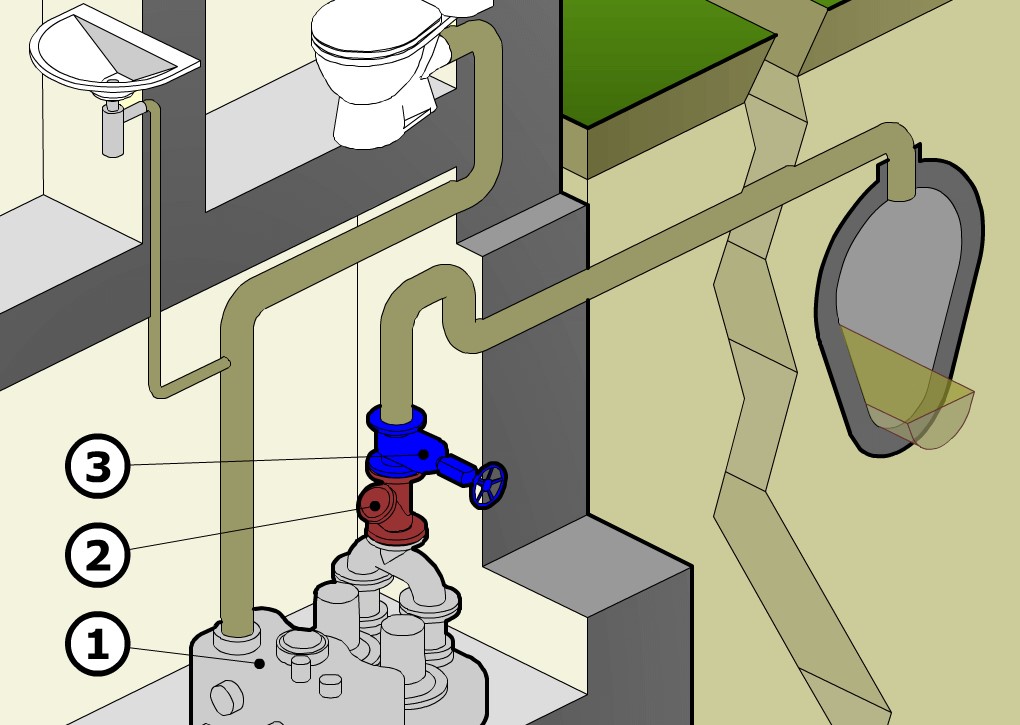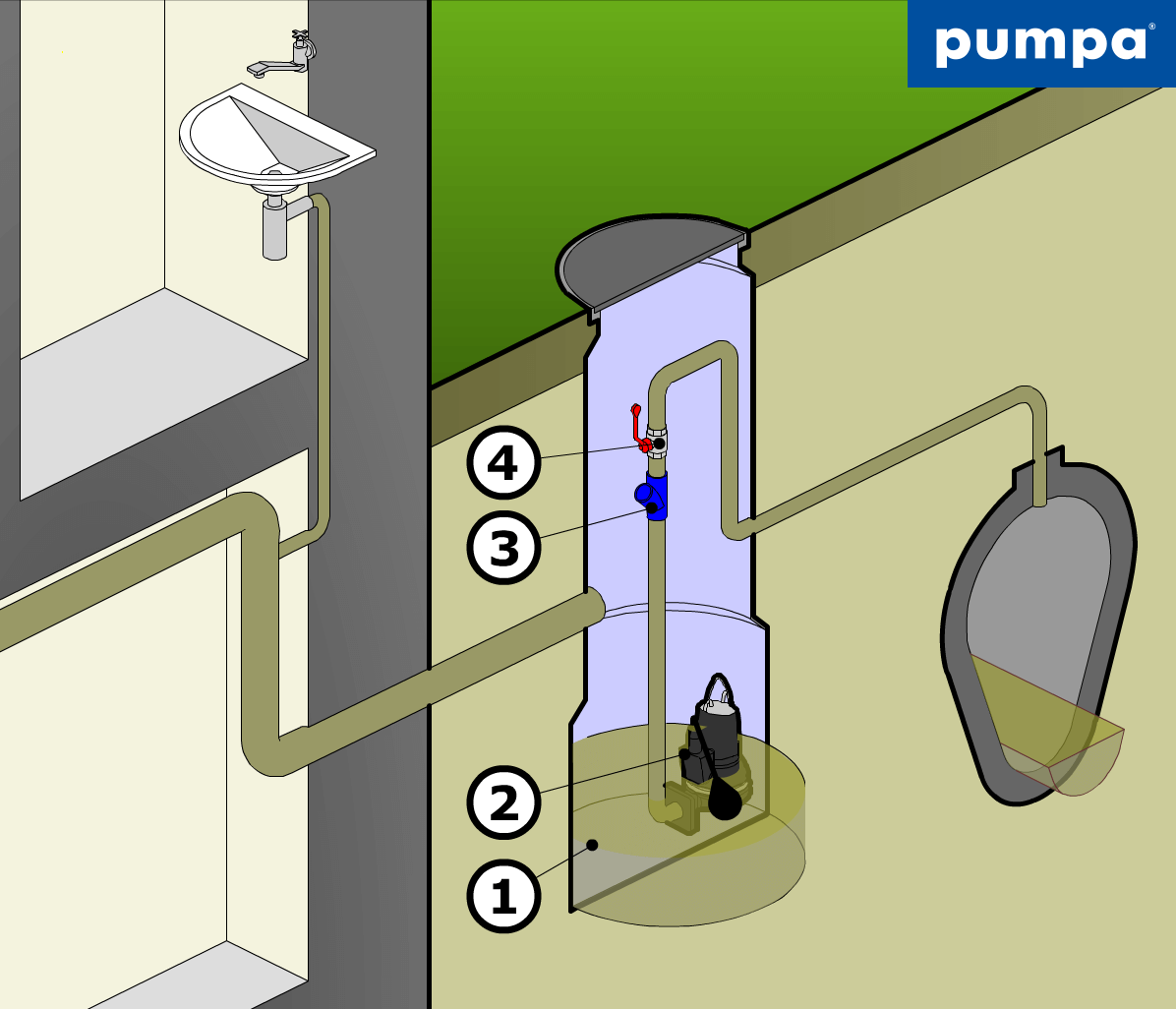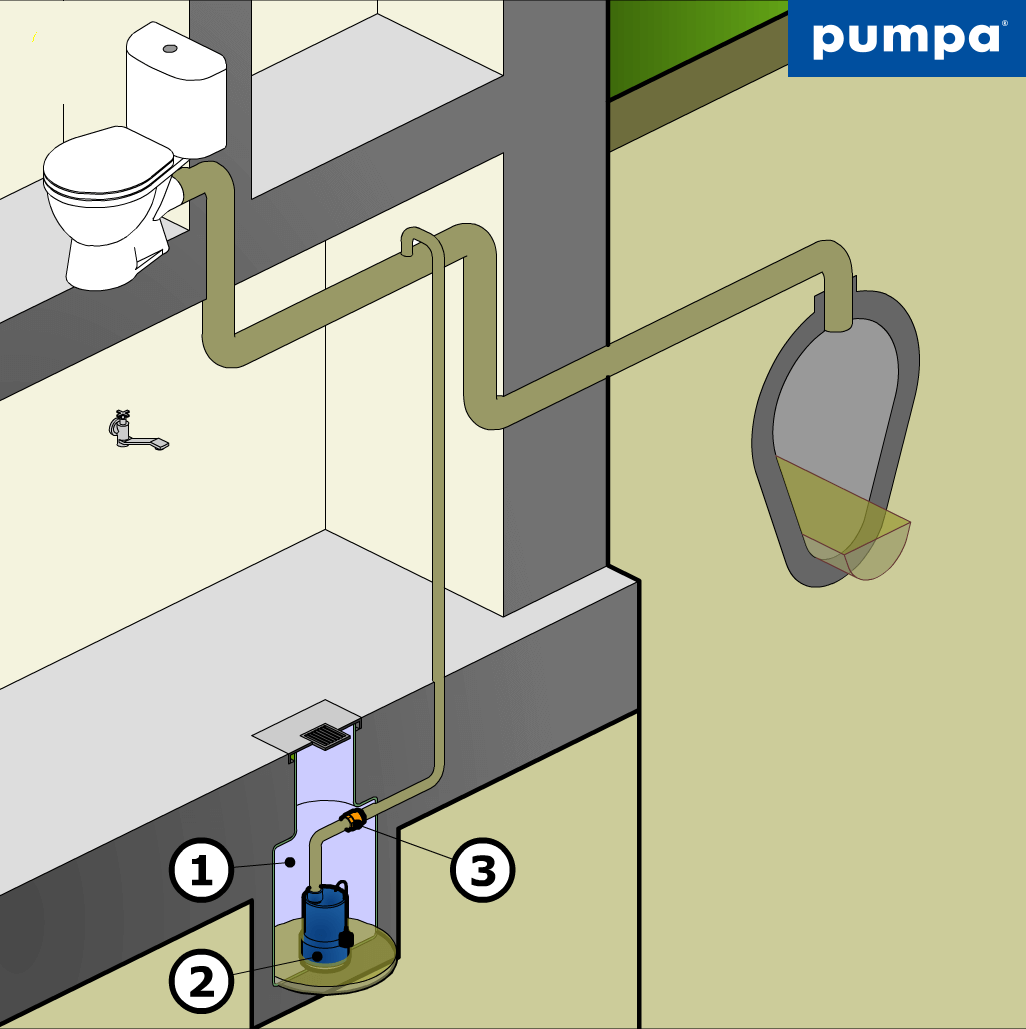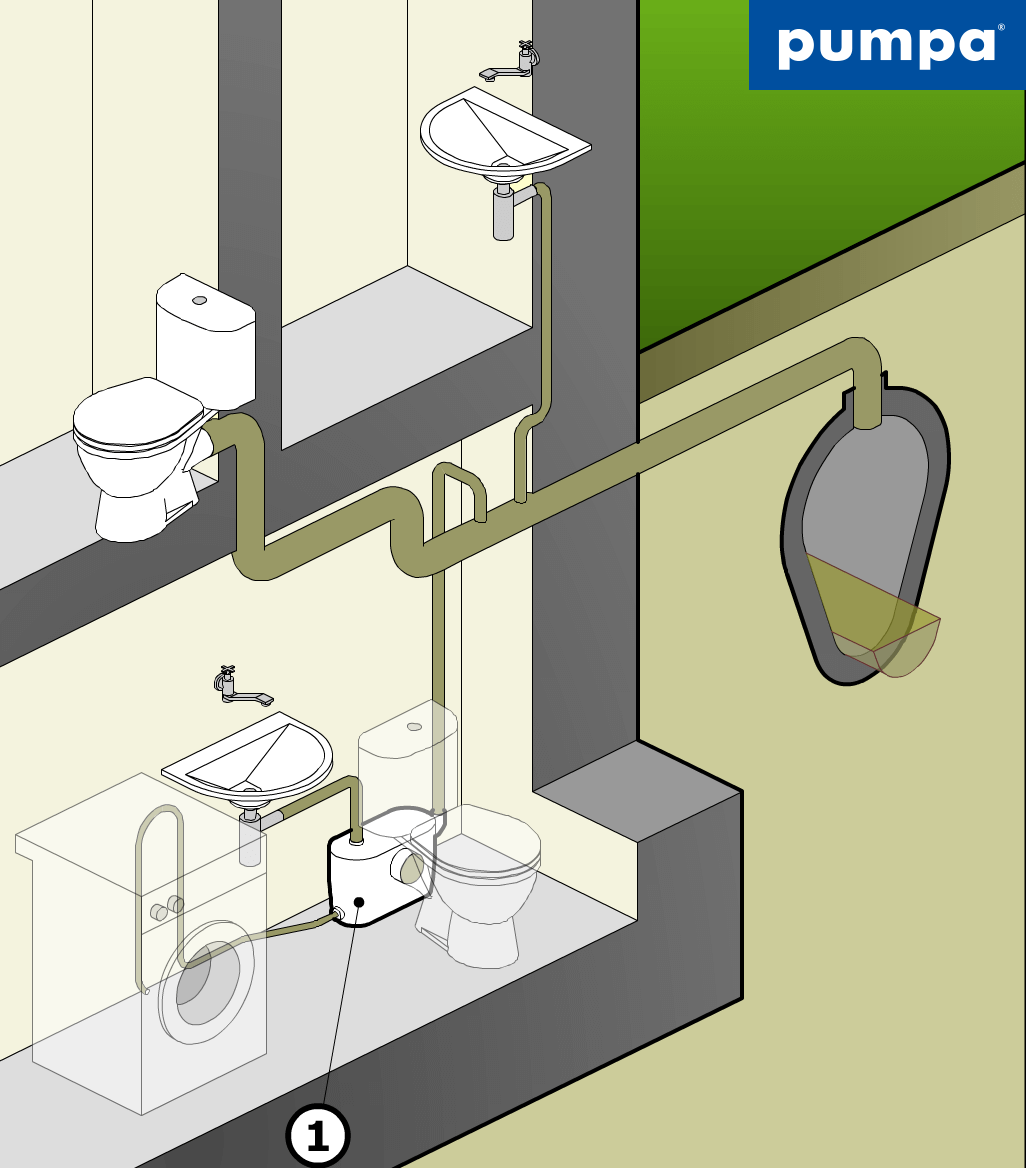Sewage disposal
Sewage water disposal with a pumping unit located in the cellar
How central sewage disposal works
Principle
Drainage of sewage from the house can be realized using sewage lifting station (1) located directly in the house. It is suitable for pumping wastewater and liquids containing solid components, such as fibrous impurities, textile residues and faeces, which have a pH value of 4 to 10. It is suitable for pumping liquids with a temperature of 0 to +40 °C, for short periods up to +60 °C. Pumping stations are provided with one or two pumps and an accumulation airtight tank. When installing a pumping station, it is necessary to ensure its protection against the reverse flow of the pumped liquid by means of a ball check valve (2). Due to possible service intervention, it is also necessary to install a gate valve on the delivery pipe (3).
Drainage of sewage water using a pumping aggregate located in front of the house in the ground
How sewage disposal from sump works
Principle
Drainage of sewage from the house can be realized using a pumping station (1) located outside the house. It is suitable for pumping and accumulating drainage and surface water, as well as wastewater from residential buildings and industrial plants. Pumping stations are made of polyethylene and can be equipped with either one or two pumps (2). Reliable operation is then ensured by the control unit. When installing a pumping station, it is necessary to ensure its protection against the reverse flow of pumped fluid by means a ball check valve (3). Due to possible service intervention, it is also necessary to install a shut-off valve on the delivery pipe (4).
Draining water from cellars
How basement drainage works
Principle
The drainage of water from areas that are at risk of flooding, from garage entrances and basement entrances, or even from washbasins, showers etc., can be carried out using a pumping station (1) located below the level of the basement of the house (also available in an above-level version). Pumping stations are made of durable plastic and can be provided with either one or two pumps (2). Reliable operation can be ensured by the control unit. When installing a pumping station, it is necessary to provide the protection against the reverse flow of pumped fluid using a ball check valve (3).
Removal of sewage and polluted water from places located below the sewer level
How local sewage disposal works
Principle
In places from which wastewater cannot be drained into the sewer system by natural gravity, it is advisable to use these small pumping stations (1). They can be connected directly behind the toilet and also lead wastewater from the sink, shower, bidet, or from the washing machine or dishwasher into them. There are versions for hanging toilets or for connection only e. g. washbasins (without toilet) available. The tank is made of lightweight plastic with an easy-to-clean surface. With proper installation, the pumping station works completely automatically and does not require any maintenance.




